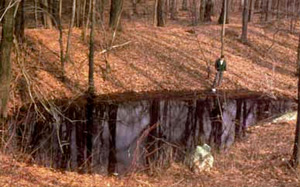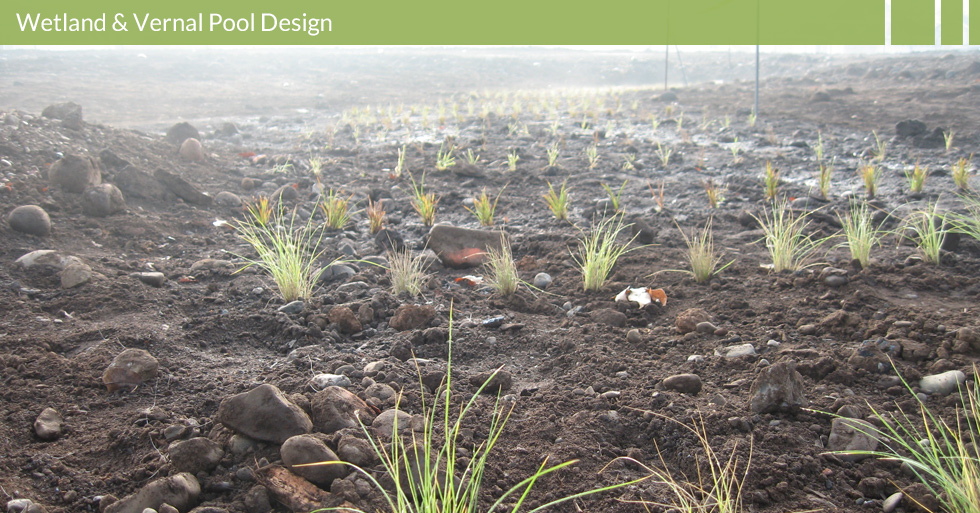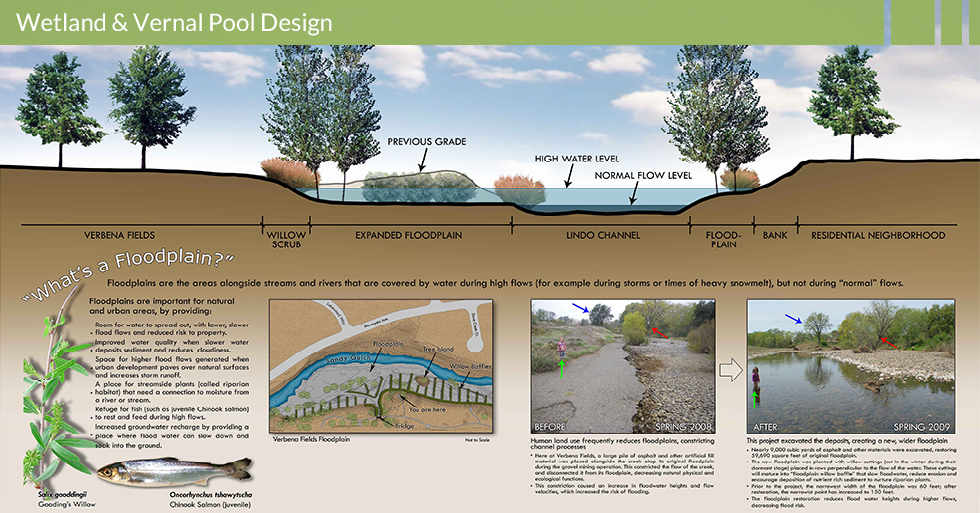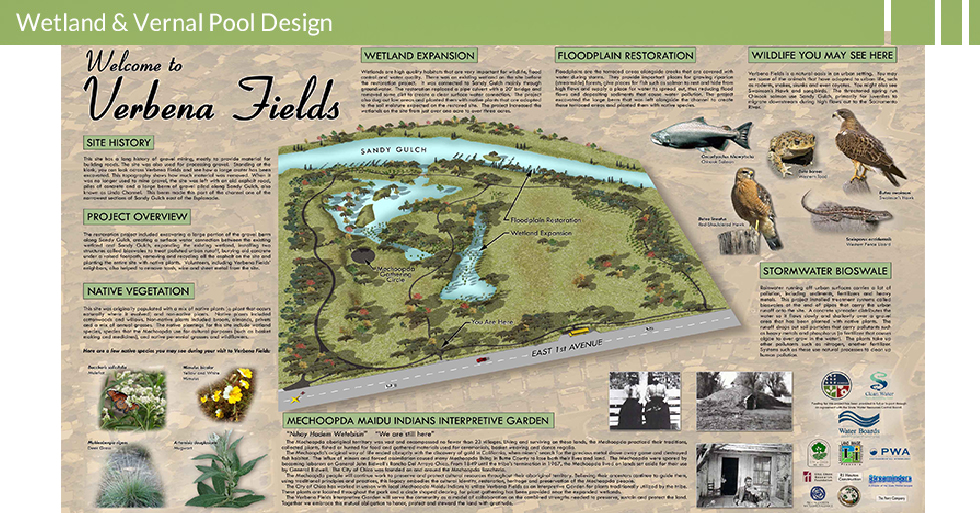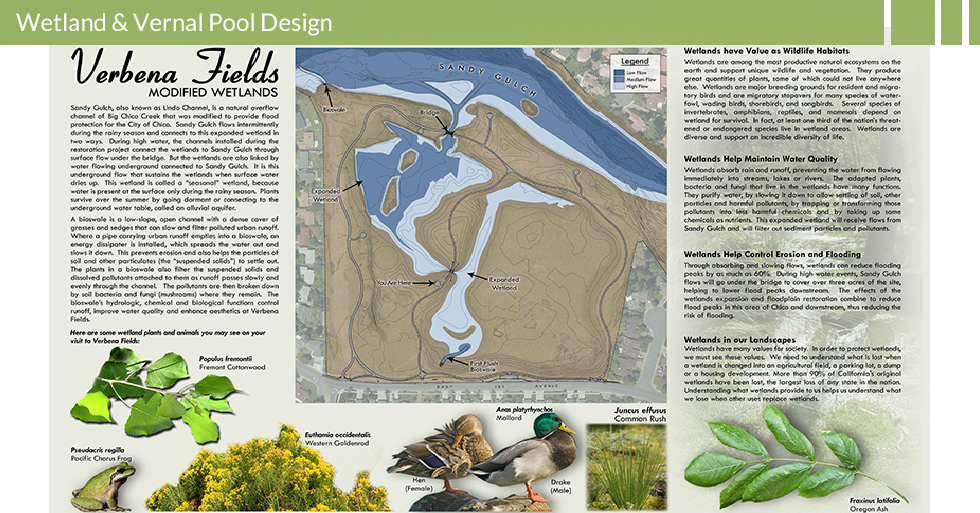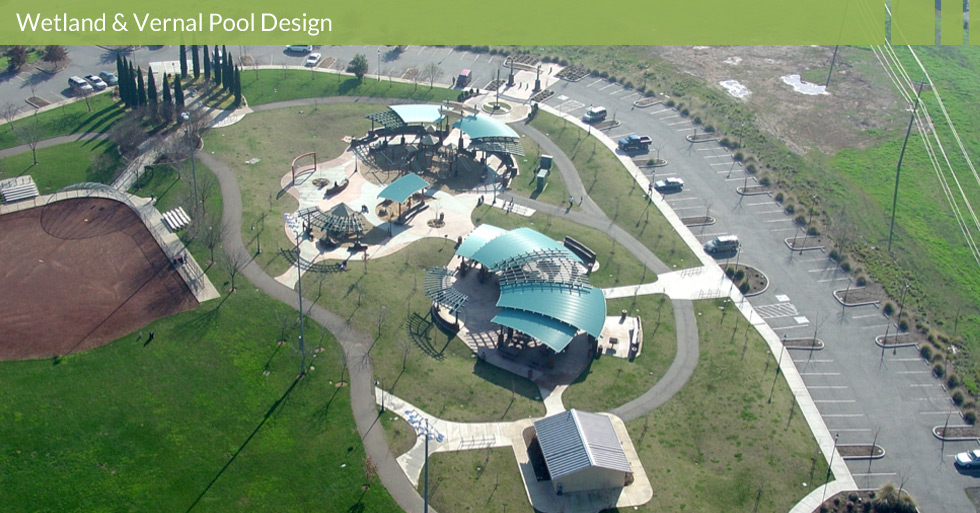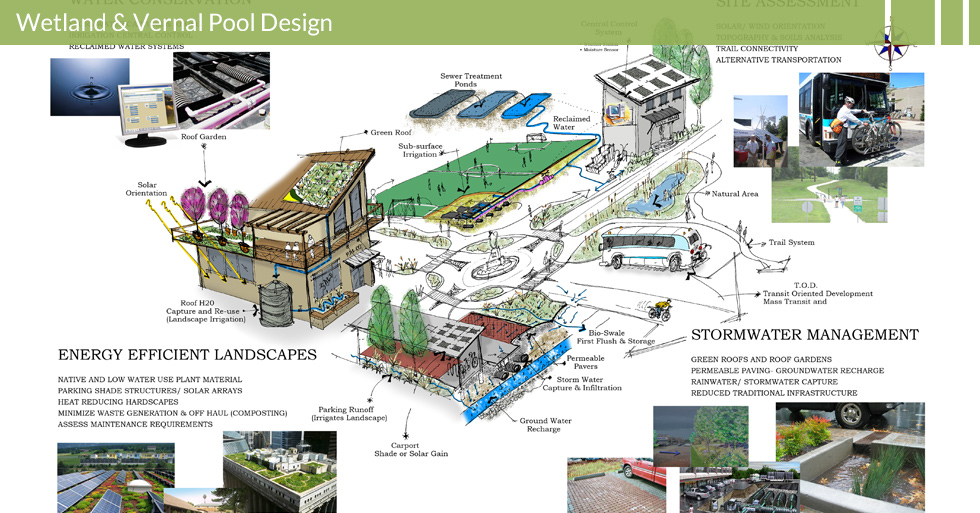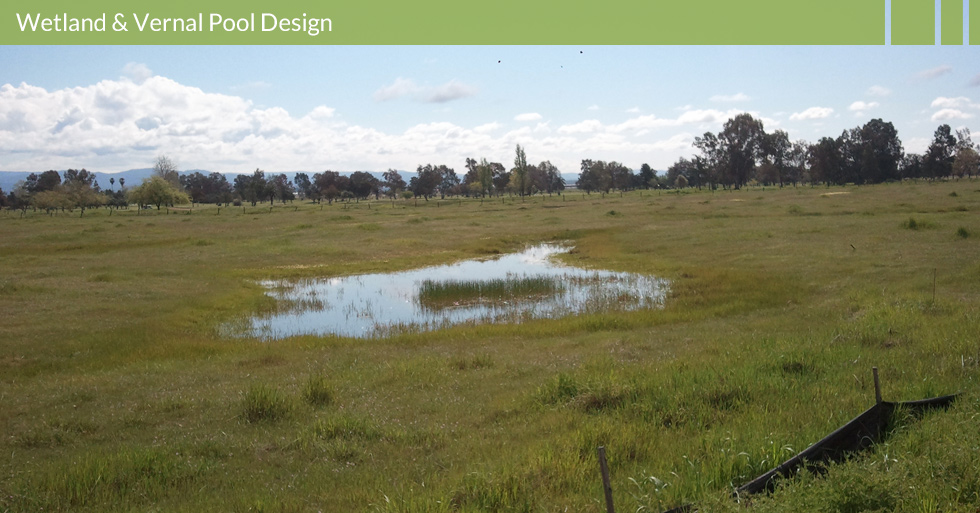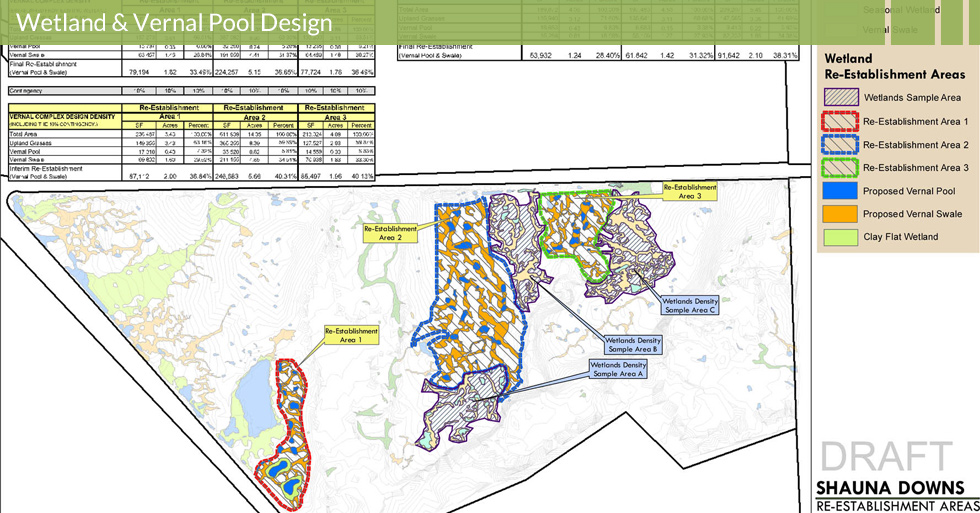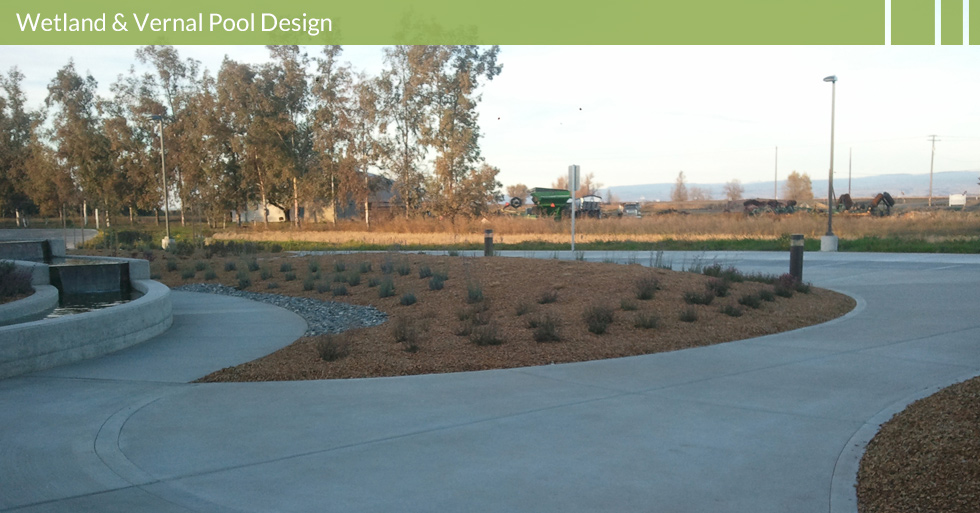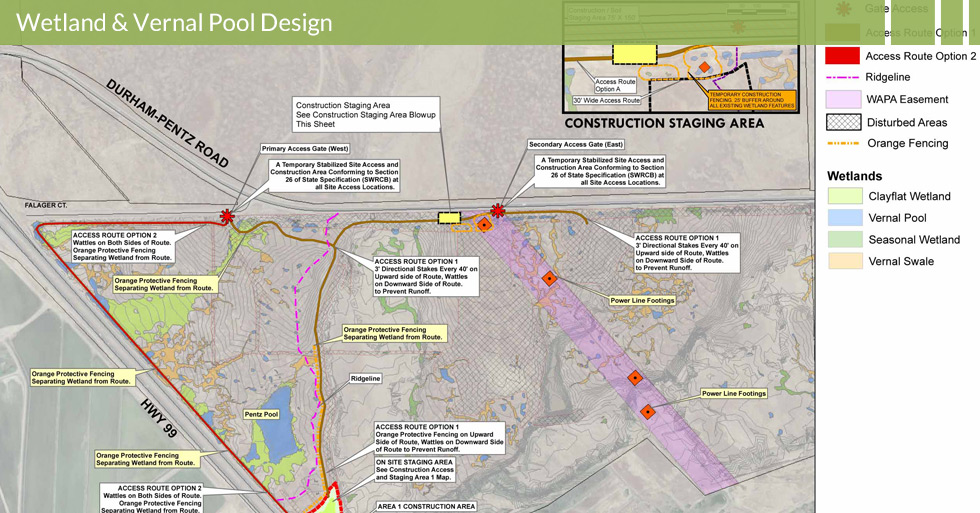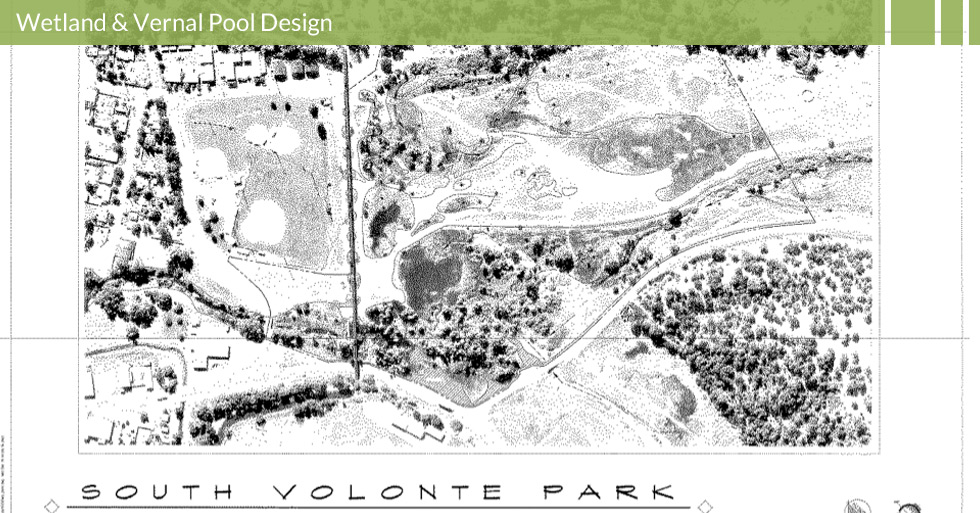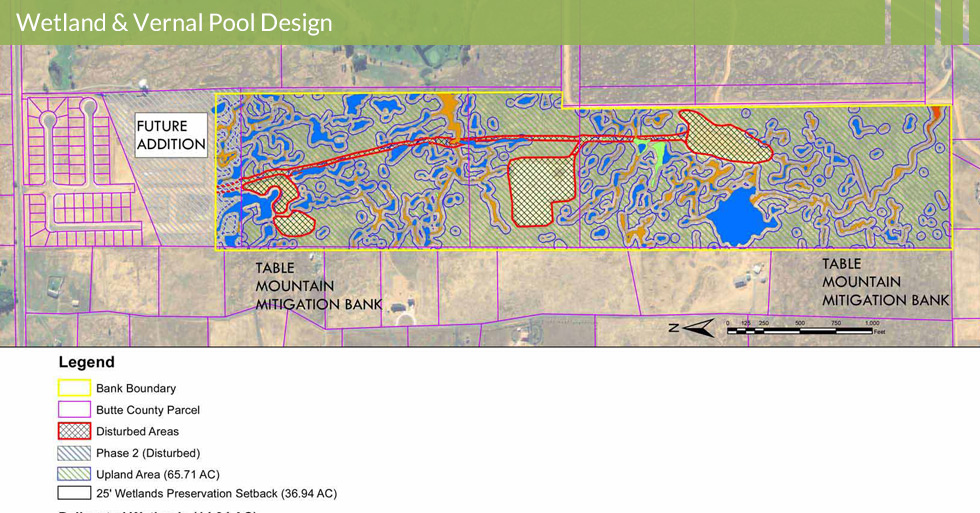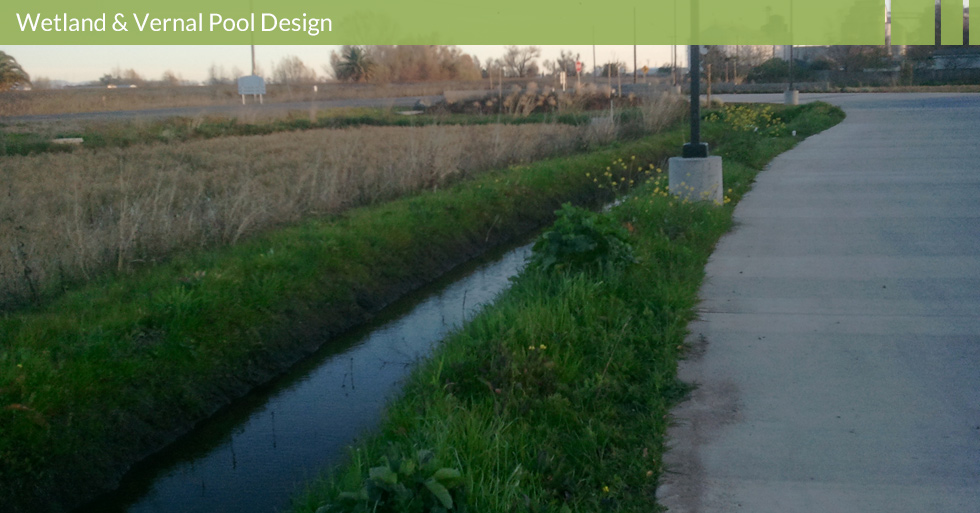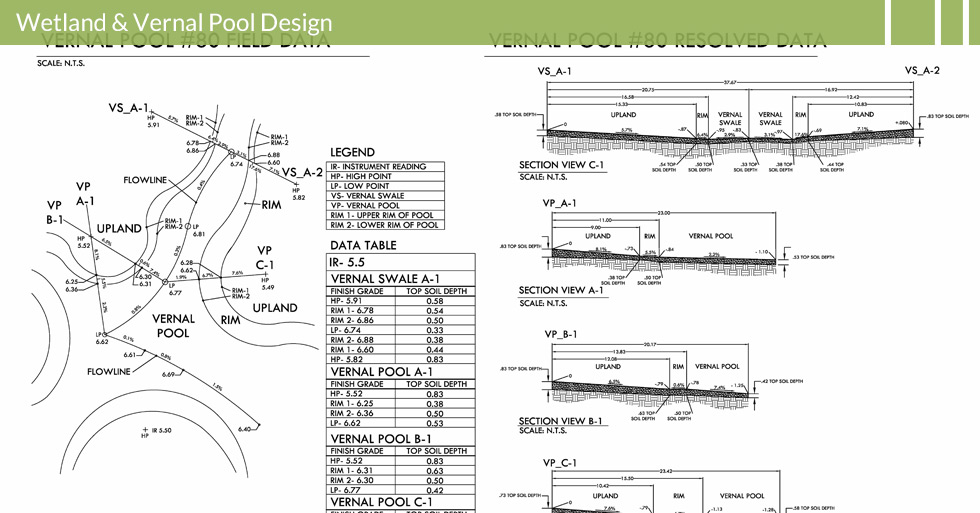Wetlands Vernal Pools Mitigation Banks
 Headquartered in the heart of the west coast, Melton Design Group (MDG) has lots of experience preserving and restoring wetland and vernal pools. MDG has lead many projects through the state and federal permitting process with a very strong approval rate. MDG provides construction documents for wetland and vernal pool design, as well as designs for mitigation banking. Fairy shrimp inoculation is also an important step when working with wetland and vernal pools, the MDG environmental team takes all the necessary steps to move your project in the right direction.
Headquartered in the heart of the west coast, Melton Design Group (MDG) has lots of experience preserving and restoring wetland and vernal pools. MDG has lead many projects through the state and federal permitting process with a very strong approval rate. MDG provides construction documents for wetland and vernal pool design, as well as designs for mitigation banking. Fairy shrimp inoculation is also an important step when working with wetland and vernal pools, the MDG environmental team takes all the necessary steps to move your project in the right direction.
According to the United States Environmental Protection Agency,
“Wetlands are areas where water covers the soil, or is present either at or near the surface of the soil all year or for varying periods of time during the year, including during the growing season. Water saturation (hydrology) largely determines how the soil develops and the types of plant and animal communities living in and on the soil. Wetlands may support both aquatic and terrestrial species. The prolonged presence of water creates conditions that favor the growth of specially adapted plants (hydrophytes) and promote the development of characteristic wetland (hydric) soils. Wetlands vary widely because of regional and local differences in soils, topography, climate, hydrology, water chemistry, vegetation, and other factors, including human disturbance. Indeed, wetlands are found from the tundra to the tropics and on every continent except Antarctica. Two general categories of wetlands are recognized: coastal or tidal wetlands and inland or non-tidal wetlands.”
Also according to the United States Environmental Protection Agency,
“Vernal pools are seasonal depressional wetlands that occur under the Mediterranean climate conditions of the West Coast. They are covered by shallow water for variable periods from winter to spring, but may be completely dry for most of the summer and fall. These wetlands range in size from small puddles to shallow lakes and are usually found in a gently sloping plain of grassland. Although generally isolated, they are sometimes connected to each other by small drainages known as vernal swales. Beneath vernal pools lies either bedrock or a hard clay layer in the soil that helps keep water in the pool.”

